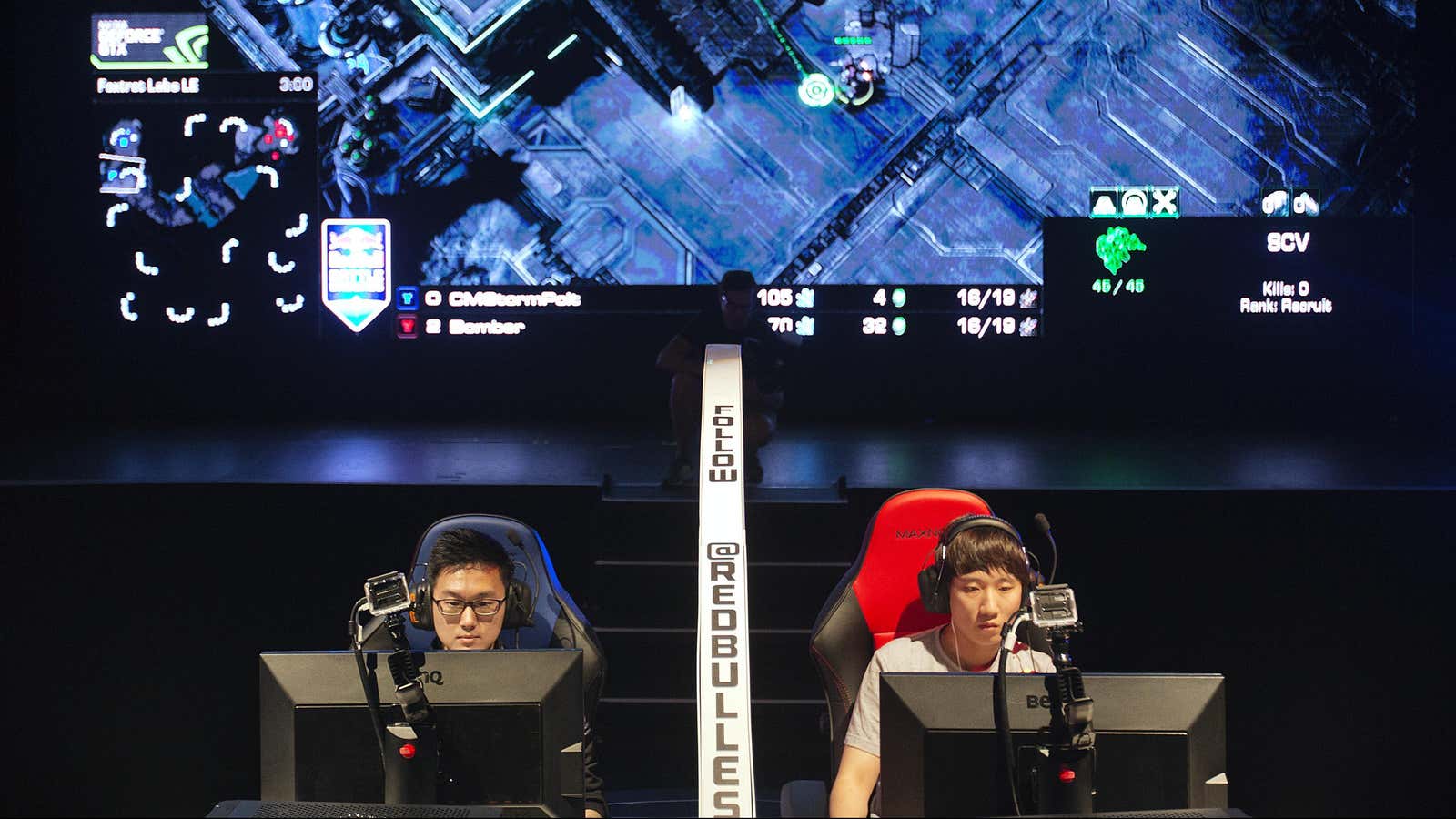First, chess fell to AI. Then Atari, and soon after, the ancient Chinese board game Go. Now, it looks like StarCraft is the next to be dominated by self-learning machines.
Google DeepMind and Blizzard announced on Nov. 4 a tool that allows artificial intelligence to directly play StarCraft II. The tool, a kind of digital controller that lets AI act as a player, was built specifically for developers to let AI bots interact with the game’s interface.
Researchers at DeepMind, an AI unit of Google, say that StarCraft is a particularly difficult challenge in videogames because of its complexity. Players must manage resources like minerals and gas, control hundreds of individual units, and scout unseen areas of the game’s map.
“StarCraft is an interesting testing environment for current AI research because it provides a useful bridge to the messiness of the real-world,” writes Oriol Vinyals in a DeepMind blog post. “The skills required for an agent to progress through the environment and play StarCraft well could ultimately transfer to real-world tasks.”
DeepMind isn’t the first to tackle StarCraft games. The Artificial Intelligence and Interactive Digital Entertainment Conference has been running a StarCraft AI competition since 2010, and a host of papers around AI and StarCraft emerged this year from tech companies like Facebook. A long-spanning project at Berkeley called Overmind has focused on beating StarCraft: Brood War, a game that has an open-source API like DeepMind’s. However, this is the first time that Blizzard has announced official support for hackers trying create digital players.
Some researchers on Twitter lamented that Blizzard only acknowledged the research around StarCraft when a big name like DeepMind showed interest.
Computers already have some advantages over humans. A key figure in measuring the competence of StarCraft players is their actions per minute (APM). Humans have to click their mouse or type hotkeys to command their units. According to the StarCraft wiki, an advanced human player can perform about 2oo APM, easily attainable at the computational scale of DeepMind or Facebook. Research from Stanford in 2014 puts average APM for its StarCraft 2 bot at 1,000 to 2,000 while battling.
Facebook just published two papers in the last two months about playing StarCraft, and its latest paper introduces its own open-source framework for Brood War called TorchCraft. Soumith Chintala, a researcher at Facebook’s AI lab, tweeted earlier that the company would be announcing the open-source code.
Open-source code, like what DeepMind and Facebook are set to release, is fast becoming the norm in artificial-intelligence research. Many researchers believe that opening the field to others for research, while not giving away the secret sauce like the data under the algorithms, accelerates the speed at which breakthroughs occur. DeepMind says its open-source tool will be released next year.
“One of the best ways to accelerate AI research is to improve the quality and diversity of environments in which to test algorithms,” Ilya Sutskever, the research director of OpenAI told Quartz in a statement. ”Making StarCraft more widely available will aid the research community.”
